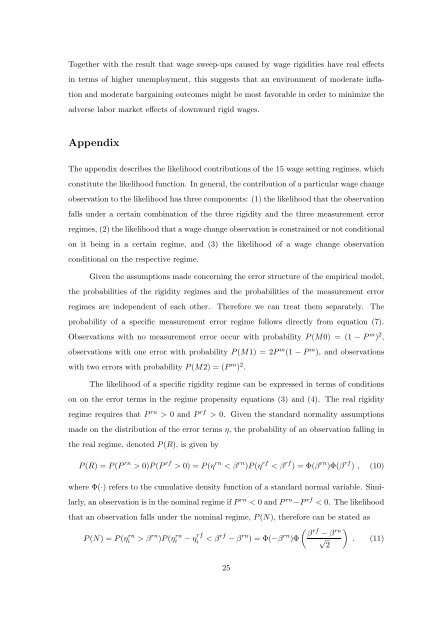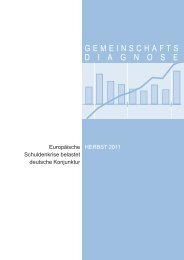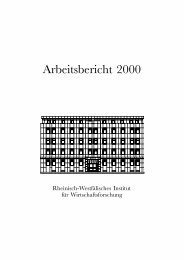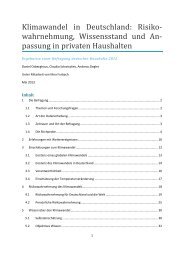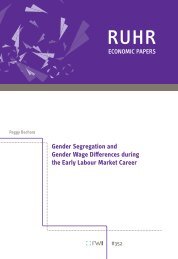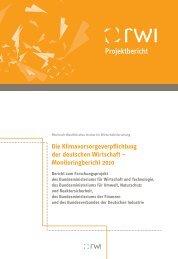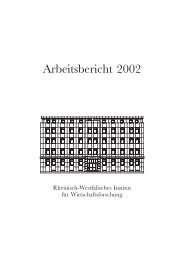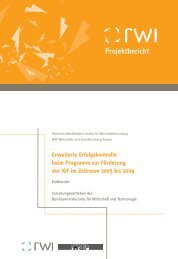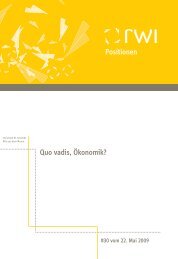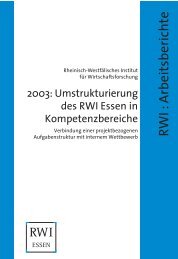RW I:Discussion Papers - Rheinisch-Westfälisches Institut für ...
RW I:Discussion Papers - Rheinisch-Westfälisches Institut für ...
RW I:Discussion Papers - Rheinisch-Westfälisches Institut für ...
Create successful ePaper yourself
Turn your PDF publications into a flip-book with our unique Google optimized e-Paper software.
Together with the result that wage sweep-ups caused by wage rigidities have real effects<br />
in terms of higher unemployment, this suggests that an environment of moderate inflation<br />
and moderate bargaining outcomes might be most favorable in order to minimize the<br />
adverse labor market effects of downward rigid wages.<br />
Appendix<br />
The appendix describes the likelihood contributions of the 15 wage setting regimes, which<br />
constitute the likelihood function. In general, the contribution of a particular wage change<br />
observation to the likelihood has three components: (1) the likelihood that the observation<br />
falls under a certain combination of the three rigidity and the three measurement error<br />
regimes, (2) the likelihood that a wage change observation is constrained or not conditional<br />
on it being in a certain regime, and (3) the likelihood of a wage change observation<br />
conditional on the respective regime.<br />
Given the assumptions made concerning the error structure of the empirical model,<br />
the probabilities of the rigidity regimes and the probabilities of the measurement error<br />
regimes are independent of each other. Therefore we can treat them separately. The<br />
probability of a specific measurement error regime follows directly from equation (7).<br />
Observations with no measurement error occur with probability P (M0) = (1 − P m ) 2 ,<br />
observations with one error with probability P (M1) = 2P m (1 − P m ), and observations<br />
with two errors with probability P (M2) = (P m ) 2 .<br />
The likelihood of a specific rigidity regime can be expressed in terms of conditions<br />
on on the error terms in the regime propensity equations (3) and (4). The real rigidity<br />
regime requires that P rn > 0 and P rf > 0. Given the standard normality assumptions<br />
made on the distribution of the error terms η, the probability of an observation falling in<br />
the real regime, denoted P (R), is given by<br />
P (R) =P (P rn > 0)P (P rf > 0) = P (η rn


